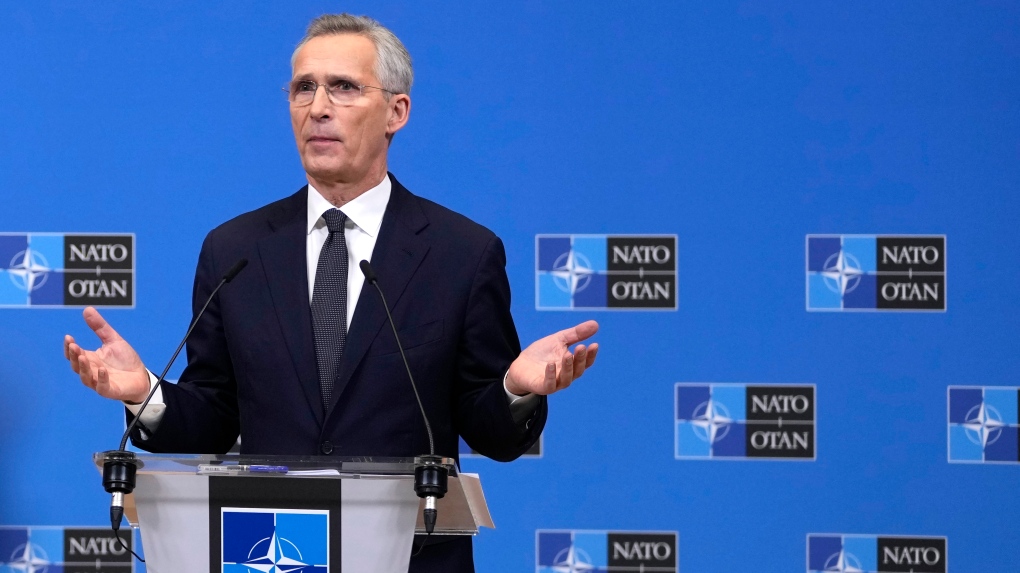Ottawa’s 1980s system of buying weapons long past obsolete
Canada’s military is short 16,000 troops, its branches are operating below readiness thresholds half the time and its budget is being cut as wars erupt worldwide. In this series, National Post examines the dangers of Undefended Canada, and how to regain our security
- National Post - 22 Feb 2024
- Richard Shimooka Richard Shimooka is senior fellow at the MacDonald Laurier Institute where he researches defence and procurement policy.
PHOTO: HMCS Yellowknife, a Kingston-class defence vessel, is shown. An estimate by the Parliamentary Budget Officer suggests a plan to acquire 15 combat ships could cost up to $80 billion — 33 per cent higher than DND’S estimate.
Of all the areas of public policy, defence procurement is perhaps the greatest source of frustration and misunderstanding. Canadians know something is amiss: they see constant reports of cost overruns, delays and poor performance. But they have little understanding of the underlying issues and challenges.
Those challenges include a complex buying process for military hardware that is largely stuck in the 1980s, a risk-averse bureaucracy, and a lack of political will, which all threaten our national security.
One approach to understanding procurement is to look at the defence budget, which is made up of three parts. The first is personnel: the soldiers, sailors, aircrew and support staff that make up the Canadian Armed Forces (CAF). Next is operations and maintenance: the fuel, food, ammunition and spare parts that keep a military moving, training and fighting.
Procurement is the third leg of this stool — without modern, effective equipment the military is useless.
A modern military requires a well-planned and properly funded process to replace obsolete equipment and adopt innovative technologies. Typically, the benchmark is that procurement should be sustained at 20 to 30 per cent of the defence budget to ensure an orderly renewal.
Underspending has several consequences, the most serious being that existing equipment becomes obsolete and worn out as replacements are delayed.
But military procurement is unique and highly complex: its operation is fundamentally different from any other area of government activity. The “defence market” operates differently from almost any other market.
Think about buying a car. There are dozens of manufacturers, offering hundreds of models, selling to millions of potential buyers in Canada. Yet the defence market is much more constrained. Canada is usually the sole buyer, and there is frequently only one or two suppliers for a product because of the highly complex nature of the solution.
One of the most challenging aspects of military procurement for governments is that it often entails acquiring capabilities at the cutting edge of technology. The cost to develop and acquire such systems are far different than buying a car off the lot. Military procurement involves a contract for a future capability incorporating immature technologies, with high levels of technical risk, resulting in increased costs, delayed deliveries and possibly less performance.
Canadians need to understand that procurements are costly programs, entailing high levels of risk: the challenge is determining what is acceptable. For example, the Canadian Surface Combatant (CSC) program is critical for the future of the Royal Canadian Navy and likely the costliest government procurement program since the Second World War.
The current estimate by the Department of National Defence is that acquiring 15 combat ships will not exceed $60 billion.
However, an estimate by the Parliamentary Budget Officer suggests it may reach $80 billion — an eye-watering 33 per cent increase, if accurate.
But predictions about increased costs are not out of the ordinary. The U.S. Congressional Research Service predicts buying the first 10 of America’s Navy Constellation-class frigate may go 40 per cent over the U.S. Navy’s estimated budget and be delivered several years late. Another program, to buy the U.S. Navy’s next generation destroyer, is predicted to go 33 to 40 per cent over budget.
Problems with Canada’s CSC’S program should not be accepted uncritically — the program has encountered a number of issues that need to be identified, addressed and mitigated. However, these challenges are not necessarily out of line with other programs worldwide.
One would assume that the unique nature of defence procurement would result in an equally unique system to oversee it. Yet, that is not the case. In Canada, it is not the military or even DND that oversees procurement, but Public Services and Procurement Canada (PSPC).
PSPC essentially acts as a purchasing agent for all federal procurements and frequently attempts to apply processes and systems for buying bridges to supersonic stealth fighters. It aims to be transparent, accountable and responsible in its management, as well as obtaining the best value for government. These are laudable ideals, but in practice they leave much to be desired. This is probably most evident in how the system deals with risk — which is to say it attempts to avoid it at all costs.
PSPC passes along responsibility for risk to defence contractors, who essentially manage it by charging a substantial premium back to government to cover any contingencies.
In reality, the PSPC’S primary interest has largely been to protect the political leadership from any embarrassments. Over the past several decades it implemented layer upon layer of processes and regulations to avoid potential problems.
All of this has resulted in a much more ponderous and Byzantine system that has led to increased delays and driven up program costs.
A recent example is the Remotely Piloted Air System program, which will provide Canada with an armed reconnaissance drone that required 17 years to acquire. PSPC took that long to settle on roughly the same option that the Air Force had originally desired 17 years earlier. It will require another five years to bring into service.
Most of Canada’s allies took four years or less to undertake the same process.
Yet the problem goes further than just PSPC, which is responsible for bringing together all the relevant stakeholders from across the government, including the Treasury Board, DND, the military, and the Innovation, Science and Economic Development Department.
The thinking goes that by having all of them at the table, various representatives can ensure their interests are met through the collaborative process. The reality has shown this is not the case. The result is usually greater discord and delays to procurements with questionable benefits.
The most important outcome, delivering effective systems to the military in a timely manner, quickly becomes crowded out by these other concerns.
The problem was evident in the past year when DND launched several “urgent operational requirements” that included new man-portable (that is, shoulder-launched) anti-tank and anti-aircraft weapon systems. Instead of making a quick sole-sourced acquisition that would immediately address the deficiency, the government decided to run a competition, delaying delivery for at least another two years.
It typifies the challenges the CAF faces in trying to obtain even critical systems in a timely fashion.
In response, DND has tended to pursue fewer projects. Instead, it “gold plates” the requirements — making them more capable to cover a number of mission sets, where several programs would be more appropriate. These gold-plated programs have much greater technical risk and are more likely to encounter problems later.
A decade ago, the procurement system was seen as a problem but not a lethal threat. Today, it is a bona fide threat to Canada’s security considering the changing nature of war.
Mirroring the dramatic shifts in civil innovation such as with AI and the internet, military technological development has advanced at an accelerated rate over the past decade. One of the ways is the nexus between high-bandwidth battlefield networking, high-fidelity sensors and data-analysis systems.
Integrating the three into battlefield capabilities has started to revolutionize how wars are fought. There are other developments that have emerged, such as hypersonic missiles, semi-and even fully autonomous drones, and cyber warfare. Taken collectively, the pace of warfare’s technological development has increased dramatically and can quickly render modern militaries obsolete if they fail to adapt.
In order to manage this reality, Canada’s allies have initiated a fairly comprehensive series of reforms to bring new technologies into service more quickly and potentially at a lower cost. That has not occurred in Canada, as the procurement system has largely retrenched back to the approaches of the 1980s.
There is no single solution to the issues surrounding defence procurement — any particular program potentially faces a myriad of different issues. A key issue has been insufficient defence spending over the past decade, despite the CAF playing a more active role internationally as well as in domestic emergencies.
Instead of spending 20 to 30 per cent on capital programs, Canada has been spending about 10 to 15 per cent over the past decade. This has forced the military to soldier on with obsolete and worn-out equipment while it waits for replacements.
One commonly discussed idea is the creation of a defence procurement agency, which was part of the Liberal party campaign plank during the 2019 election. This is not a new idea, nor will it be successful on its own. Slathering on another layer of bureaucracy and recreating all the existing structures and relationships will only perpetuate the same failures.
A better approach would be to leverage a governmentwide reorganization with some of the reforms Canada’s allies have implemented. One idea would be to empower program managers, giving them greater responsibility and authority to oversee programs.
This would exclude many of the delays and issues that afflict current programs and empower managers to make decisions that balance competing interests without the excessive process that typifies the current procurement system. It would also sharpen accountability, as a single point of contact is much easier to manage than the group setting.
Canadian civil society needs to better understand defence procurement, but there is simply not the depth of understanding or diversity of opinion in the country needed to improve our collective knowledge.
A final essential ingredient is necessary: sustained political leadership.
Like the public, successive governments have identified the problems surrounding defence procurement, but have not come up with good solutions or the motivation to expend political capital to fix the problems. Given the uncertain international environment, and the challenges facing the CAF, this is something political leaders must understand immediately. Canada no longer has time to waste.





www.ctvnews.ca

www.ctvnews.ca


www.ctvnews.ca


